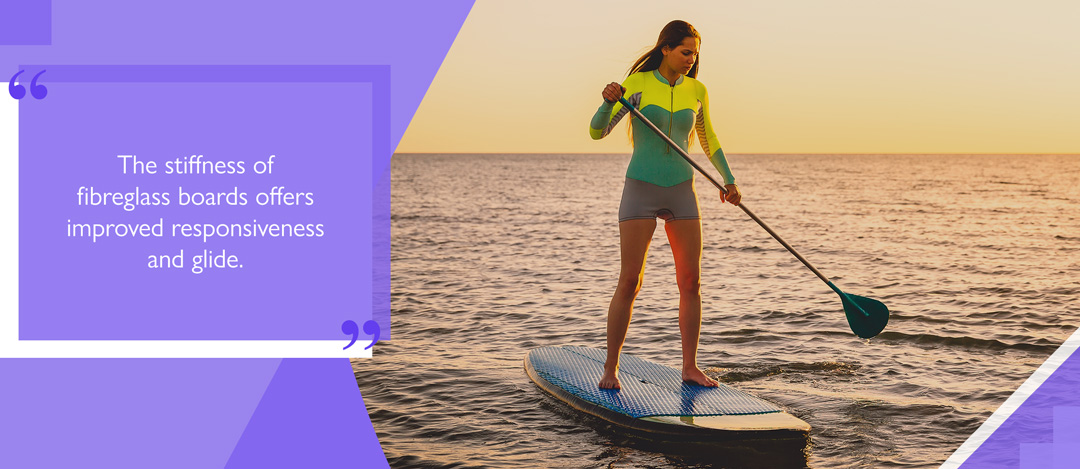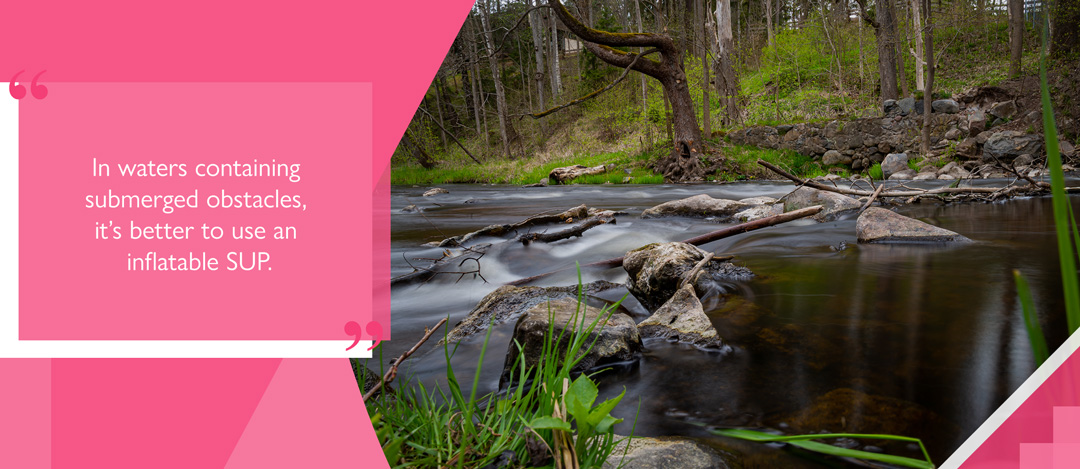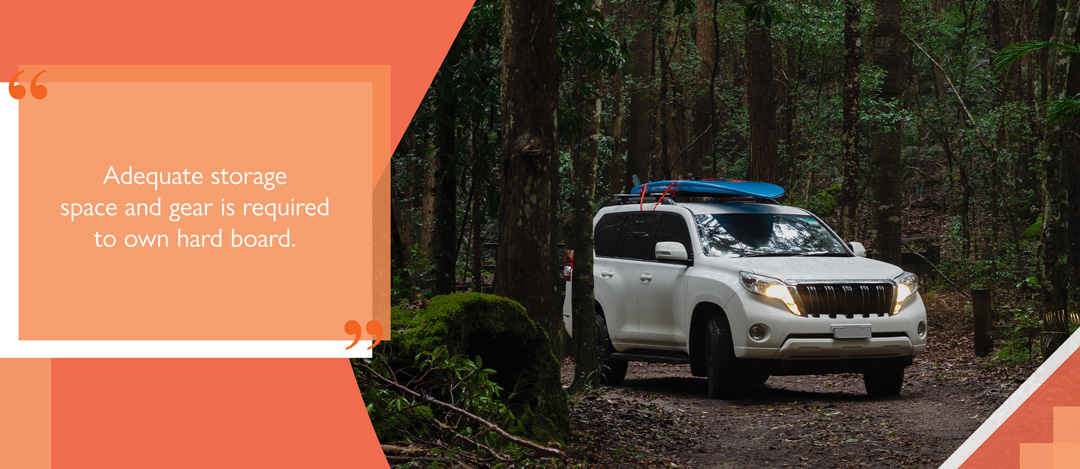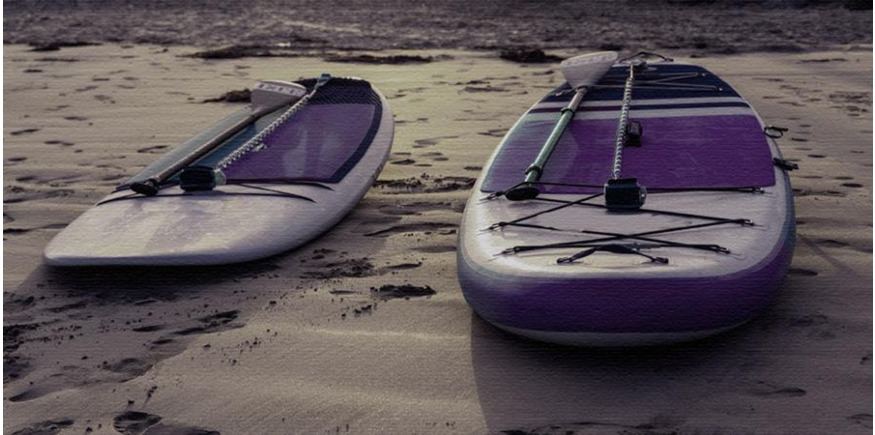Both types of stand-up paddle board have their own pros and cons. The decision of which to buy most often comes down to intended use, convenience, and budget.
What’s the difference?
Fibreglass SUP construction
Hard boards are usually made of a foam core covered by fibreglass and an epoxy resin coating. Stiffer than inflatable paddle boards, fibreglass boards don’t rely on air for their rigidity, which some find more reliable.
Inflatable SUP construction
Inflatable boards are usually comprised of a central air chamber of polyester fabric. PVC is then layered over the air chamber as an exterior coating. Layers can be sealed by glue or heat moulding according to design.
Though not be as rigid as hard boards, the internal air chamber of an iSUP makes it more buoyant allowing for higher payloads.
PVC also offers more grip for riders than the resin coating of a hardboard, and affords better protection from damage. Additional deck grip and stiffening rails provide added performance and durability.

Performance on the water
The stiffness of fibreglass boards offers improved responsiveness and glide. Greater mass means they are less likely to be buffeted off course by strong winds and surf.
A smooth, hard exterior also makes turning and building speed easier, useful for professional SUP racers or surfers.
Many who choose solid paddle boards find the ride more consistent during and across sessions. However, the slick texture of fibreglass boards can make them feel slippery and uncomfortable underfoot during long sessions.
Can inflatable SUPs keep up?
While hard paddle boards are an appealing option for professional competition, inflatable SUPs still offer high performance.
Many good quality inflatable SUPs are stiff and light, making them easily manoeuvrable on the water. Many riders find the cushioned coating, better grip, and lightweight nature of inflatable paddle boards less tiring underfoot.
Transport and storage for SUPs
Inflatable SUPs have convenience in the bag
Inflatable boards come into their own in terms of portability. They can be deflated and stowed in a bag, and then carried easily. If cleaned and maintained properly, the chances of damage in transit or storage are much lower.
Aside from ease of travel, the portability of inflatable SUPs makes paddling in remote areas much more possible. Boards can be carried on foot and inflated on site, where bags and pumps can be strapped onboard.

Caught between a roof rack and a hard board
Adequate storage space and gear is required to own fibreglass boards, as their weight and size can’t be altered for transportation or storage. Whether this involves renting storage or buying a roof rack, it factors into ease and costs.
Aside from being more cumbersome, hard boards are also more likely to sustain damage while in transit or storage. Their size can make them difficult to manoeuvre, and hard impacts won’t simply bounce off.
Likelihood of damage
As fibreglass paddle boards have less give, they can be damaged more easily. Once damaged, the boards will usually require professional repair rather than self-care. Damage can affect board performance, as the flow of water around the board is disrupted.
Inflatable paddle boards are generally more difficult to damage. In the unlikely event a board is punctured, it can be repaired with an inexpensive, easy to use repair kit.
In waters likely to contain submerged obstacles, such as a river, it will always be better to use an inflatable SUP, due to their ruggedness and durability.
Personal injury
Hurting yourself is also more likely on a hard paddle board. The lighter mass and density of an inflatable SUP, as well as the suppleness of the material, means that a bodily collision with a board, due to falling in or leash recoil, will be less likely to cause serious damage.

Cost of paddle boards
Fibreglass boards are typically more expensive than inflatables. This makes damage a more consequential issue, especially when the upfront cost and cost of repair is considered.
Though generally less expensive than a fibreglass board, scrimping on an inflatable SUP risks exposure to a poor-quality build that doesn’t last or perform how it should. A well-constructed inflatable paddle board provides a lot of value, as it can compete with a hard board in almost every facet.
At Two Bare Feet our range of inflatable paddle boards utilises drop-stitch technology for a strong, stiff, and reliable ride that won’t lose or displace air. Heat moulded double-layered PVC, and the option for additional laminate stiffening strips, ensure a rigid board that keeps pace with you.
For more information about choosing an inflatable SUP, check out our buyer’s guide. Alternatively, our team of SUP experts will be more than happy to answer your questions. Get in touch today.




